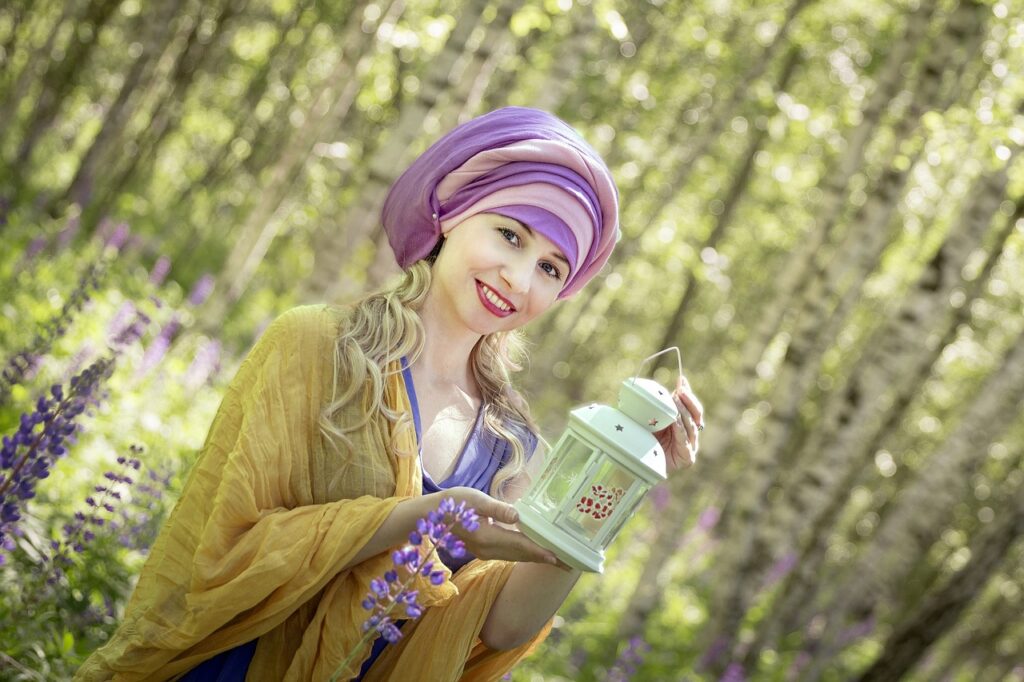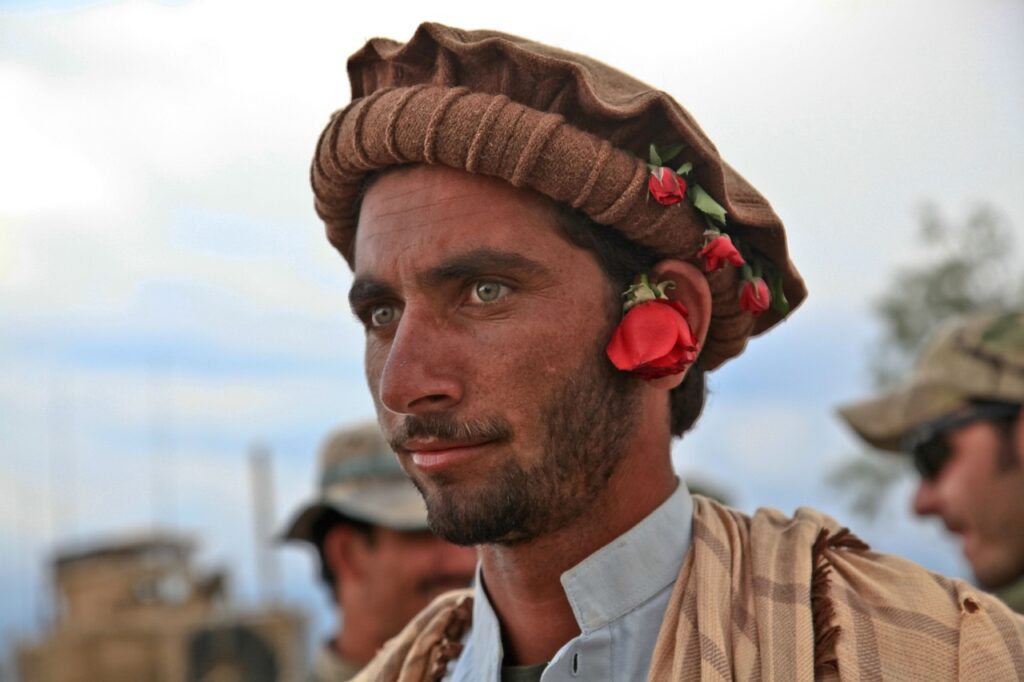The cultural, religious, and climatic diversity of the Arab world is seen in the vast tapestry of traditional clothes that make up Arab dress.
These Arab Traditional Clothing items—from the thobe and dishdasha worn by men to the abaya and hijab worn by women—serve as both their identity and useful responses to the problems brought on by the area’s climate.
The diversity of Arab dress may be seen in both the designs and fashions as well as the cultural significance given to each item of clothing.
These clothing items frequently symbolize enduring traditions, religious symbols, and community pride.
Even though many people still value traditional Arab clothes, it’s crucial to recognize that modern fashion trends have had an impact on how people dress in the Arab world.
Arab Traditional Clothing styles are updated with modern parts, illustrating how the clothing sector is dynamic and ever-changing.
10 Arab Traditional Clothing

These clothes not only respect cultural traditions but also maintain Islamic principles of modesty and practicality. Please be aware that different Arab nations and regions may have different traditional dress names and styles.
Depending on the region and a person’s preferences, Arabian clothing can vary; however, it is inspired by Islamic ideas and traditions.
Islam has a big influence on how people dress in many Arab nations. The idea of modesty is important, and both men and women should dress modestly, with different levels of body coverage.
1. The Thobe
This cloth, known as a “Thobe” or “Dishdasha,” is worn by different people depending on the locality. Most Arabian countries have a different form of their thobe, but the general purpose of the thobe is the same.
The Thobes are often white; they help the wearers under intense heat. The thobe or dishdasha is an important element of Arab men’s traditional dress. Although, alone, this dress looks incomplete on the dresser.
Countries like Jordan, Palestine, and Syria, are known for their simple, loose-fitting thobes, which are often ankle-length. With embroidered edges beautifying the garment, these can be of any color.
However white is a more preferred choice by many as it entails purity in the traditionally religious sense.
2. The Abaya
This Arab traditional clothing is a modest long garment used by Muslim women of Arabian origin. Although they can be found in a variety of patterns and colors, abayas are often of one color, black.
Their designs and different and distinct, having a loose and flowing design. The average length of an Abaya is beyond the ankles as the sleeves are also long and wide.
Arab women wear this clothing in their bid to maintain the Islamic requirements for modest dressing and coverage.
However, this outfit covers the whole body except for the faces and hands of the wearers. Still, yet, abaya can come in some other colors, although black is the favorite.
The abaya’s basic pattern doesn’t change, but some cultural differences affect the style of the Abaya that may exist. Abayas are worn on the western side of the Arabian, for instance, and differ in appearance from those in North Africa.
3. The Keffiyeh
This is a scarf-like traditional outfit that is originally from the Middle East. The Keffiyeh is a traditional scarf that stands out by its square shape. Palestine happens to have the Keffiyah as a national traditional scarf.
The Palestinian Keffiyeh has this distinct feature of black and white pattern design.
It has a significance of cultural and political significance throughout the Middle East. It is frequently worn as a symbol of Palestinian resistance and unity. So, despite being a fashion ware, it is also a tool, a tool of diplomatic struggle.
The Palestinian Keffiyeh has served as a symbol for generations already.
Keffiyehs are a useful tool in addition to being a symbol.
They operate as an essential part of traditional clothing in hot places like the desert. Despite its significant cultural and political meanings, it represents a worldwide friendship and support for many different causes, especially between Palestinians.
4. Ghutrah
The Ghutrah is another head coverage, which originates from the Middle East. Also called the Shemagh, it is a traditional head covering that is frequently worn by men.
In countries like Saudi Arabia, the United Arab Emirates, Jordan, and Iraq, this headwear is prominently worn by men.
Also, it has a design like a strip or checkered pattern. The ghutrah can be worn as a scarf or around the neck in addition to its traditional use as a head covering, hence offering additional protection from the weather.
The ghutrah’s color and pattern may have separate meanings or connections in some Middle Eastern nations. The ghutrah or shemagh is a symbol of Middle Eastern culture and heritage in addition to being a useful garment for the harsh desert environment.
5. A Bisht
The Arabians often wear this cloth during extravagant gatherings. This traditional overcoat spreads like a jacket but this time, for formal or ceremonial purposes. It has an exquisite and regal appearance.
This Arab traditional clothing is often longer by length and has this shouldering overflow. However, also being a flowing garment, it has a broadened open front. It is normally made of silk with a lovely design.
The Basht is mainly used for formal events and large gatherings like weddings and religious ceremonies amongst the Arabians. This cloth is regarded as a symbol of love and high value.
When it’s worn to an occasion, the chief of the occasion sees the wearer as who values his invitation. Also, like other Arab traditional Clothing, the bisht is a representation of both style and culture.
It is frequently passed down through families as a treasured past and serves as a reminder of one’s appreciation for Arab culture and heritage.
Different countryside, different clans, and different families have a stereotyped design that can serve as a generational style.
Because it combines expensive fabrics and ornate ornamentation, the bisht is a significant Arab clothe that stands for class and rank mostly.
6. Jallabiya
In many regions of the Arab world, particularly in North Africa, men and women similarly wear this traditional cloth. The Jallabiya is a loose-fitting robe or gown. Some amazing features of this dress are its flexibility and how portable its fabrics are.
It can be used for different purposes including the traditional display of one’s cultural origin as well as coverage from hot weather.
The Jallabiya is well appreciated when it’s traditionally long, has broad sleeves, and is ankle-length. People, however, prefer to pair the jalabiya with a variety of accessories, such as a headscarf or jewelry.
Depending on the class of the dresser, who might prefer to add a modern-day sandal, this is however depending on regional norms.
Well, also, one fascinating fact about the jalabiya is that it is worn by both men and women. Even though ornamentation and fit can vary from time to time, the pattern is often the same for both sexes. Accompanying accessories might come in handy according to personal preferences.
Along with traditional jalabiyas, there are also modern versions that incorporate traditional styles with contemporary fashion trends. These adaptations typically cater to a larger audience and may use different fabrics and styles.
The Jallabiya is the most worn Arab traditional clothing outside of Arabian countries.
7. The Niqab
The Niqab is designed and decorated to completely cover the face, leaving only a slit for the eyes. To uphold their modesty and adhere to their religion, some Muslim women elect to cover their faces with the Niqab. Although it can also be in numerous colors and styles, it is often black.
Furthermore, Islamic teachings state that women who decide to wear the niqab are doing so to demonstrate their commitment to modesty.
It is viewed as a way to protect one’s privacy and stay away from snooping eyes.
The niqab, like other traditional Islamic attire, demonstrates the diversity of Muslim people around the world.
Majority of the time this outfit makes up for a lot of coverage for the average Islamic woman.
Although the modern design of the Niqabs comes in a variety of designs, but still maintains a high level of coverage.
Additionally, there are also some regional differences in the niqab’s style and appearance.

8. A Turban
The turban is a very popular head covering that is used mainly in the desert areas of the Arab world.
It is a long piece of fabric, often of cotton or silk quality.
The wearing of this head covering is not restricted to only Arabian nativities alone; Westerners and Asians have most recently used the Turban both for fashion shows and for casual outings.
Significantly, the Turban has served as a covering for the Arabians living in far more harsh weathered zones. But is more significant in the cultural perspective it stands for.
There are cultural values and also religious representations. The turban serves as a symbol of commitment to faith, service, and equality, especially amongst the native men of Sikhs. The turban is an essential component of Sikhism’s religious identity.
Turbans are a sophisticated and adaptable style of hat with several symbolic values.
It comes in different forms and styles, and each style represents a different culture and tribe among the Arabians.
But these differences in style might mean nothing significant outside of Arab.
9. The Hijab
Generally, there is this misconception between a Nijab and a Niqab. A hijab covers the chest and head and is a veil-like coverage worm by Muslim women. The purpose is to cover both her chest and head in the presence of strangers or males who are not her family members.
Essentially, the niqab is a veil that covers the face but leaves the eye area uncovered.
This traditional Islamic scarf is known to be used as a display of modesty. With the Hijab, the head and neck are typically covered, but the face is usually exposed. The hijab is a garment that varies in size and style. Hijabs are available in a range of colors and patterns to suit individual styles.
Concisely, the target reason for using a Nijab is for religious purposes, the Islamic value of modesty is maintained. When a woman wears a Hijab, she shows her willingness to remain modest and obedient to her faith.
So some use the Hijab in the presence of men who are not mahrams (closely related men). Some use it as a day-to-day dress in their everyday lives.
10. The Daraa
In several parts of Saudi Arabia and the Arabian Peninsula, particularly in the Najd region, people wear the “Daraa” or “Dara’a” traditionally. This is a clothing that can be used by both males and females.
Although a woman can wear this dress, men will prefer using other clothing accessories to accompany the outfit.
There are some embellishments used in designing this outfit. The Daraa can come in a variety of designs and colors depending on the area and the wearer’s preferences.
Traditional daraas are often white or off-white in hue, reflecting sunlight to keep the wearer cooler. White is thought to symbolize simplicity and purity. It is worn in several circumstances, including formal events and parties as well as social gatherings
Final Words
Most Arab Traditional Clothing has cultural and religious importance in addition to serving as symbols of identity, heritage, and modesty. The details of these clothes can help people accept and appreciate the diversity that makes up the Arab world.




